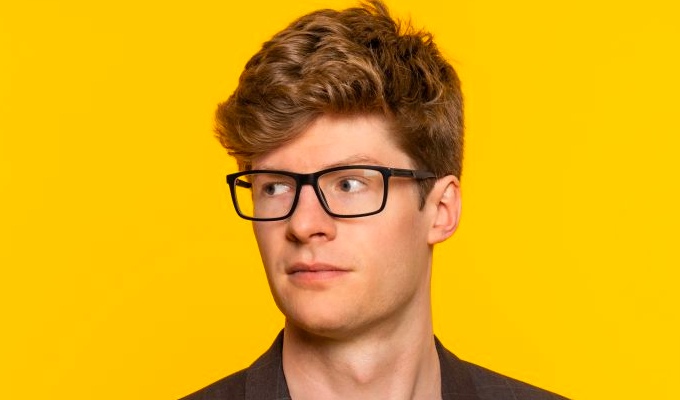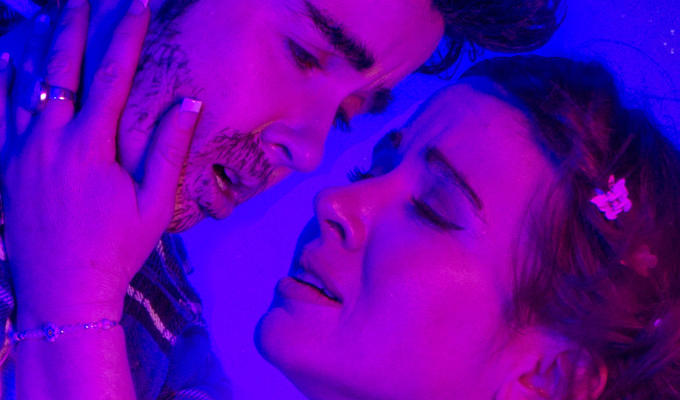The best comedy club, ever...
by Dave Cohen
There was a period in the early Eighties, after The Young Ones had leapt from nightclub obscurity to television stardom, when live comedy could have died out. The original movement had centred on The Comedy Store, and a few venues around the capital. Robbed of the stars that had made its name, by 1983 The Comedy Store had closed down and returned to its former life as a strip club.Many of the original Comedy Store acts, glimpsed briefly in The Young Ones, had emerged from the late Seventiess London Fringe Theatre circuit that thrived up to the moment when Margaret Thatcher came to power in May 1979 - at which point subsidised theatre became as popular as paedophilia and the Trade Union movement. Jim Barclay, Andy de la Tour, and of course the man who first coined the phrase ‘alternative comedy’, Tony Allen, kept the live comedy circuit going, until a number of new acts inspired by Alexei Sayle appeared: Paul Merton, Mark Steel, Harry Enfield and many more.
The circuit could not have continued without the dedication of a few devoted promoters, who in the absence of sizeable crowds were clearly in it for love – among them Jean Nicholson, who ran The Crown and Castle in Dalston, and Roland and Claire Muldoon, who booked several venues under their New Variety banner.
In 1983, several clubs opened that are still with us, including Balham’s Banana, run by Andy Waring, and Downstairs At The King’s Head, then as now run by Peter Grahame. And there was one extraordinary venue that became renowned for its innovation, and dared to create bold and imaginative bills week in week out. Variety, comedy, fringe theatre, circus, musical comedy - you never knew what to expect.
That club was called… Jongleurs.
Yes, amazingly, the venue that has long since become a by-word for all that is despised by stand-up purists, was for a couple of years the most innovative in the country. The bold programming was the work of Maria Kempinska, who reinvented the defunct Battersea ice rink as a comedy club.
Within a few months it became the most exciting space in London for performers and audience alike. It was still a room above a pub, but there were proper lights and stage, and a couple of hundred punters, which was easily the most people we’d ever played to.
You never quite knew what to expect with a Jongleurs bill - not just the mix of jugglers, fire-eaters, magicians and stand-ups you could see on a New Variety bill. Amazingly, there were also regular appearances by Theatre de Complicite. Those darlings of the avant garde frequently stormed at Jongleurs, even though the odds seemed heavily stacked against them.
Ra Ra Zoo were an alternative circus troupe who always drove the crowd wild, much to the annoyance of the stand-ups waiting to follow them. One night they were so alternative that the trapezist actually fell off her swing during their 20 minute set – not the best idea, but it certainly got them audience sympathy and they went off again to wild applause. No comedian fluffing his lines ever earned such compassion.
What made Jongleurs special for performers was the audience. It was the only venue outside of the Edinburgh fringe where the mix was young, old, black, white, middle and working class. Battersea in the early Eighties was a typical London suburb, mainly working-class with masses of housing and a few decent parks. Thatcher’s sell-off of council estates was about to change all that and Battersea was set to become a prototype for much of the rest of the country – rich people moving in to the nice houses, whacking up the price and making them unaffordable to the people who’d lived in the borough all their lives.
And Jongleurs, too, was set to change. Maria’s husband John Davy took over the business side of the club, and almost in parallel to the gentrification of Battersea, so the comedy club concentrated less on risky innovation and more on financial accumulation.
Gradually, the emphasis moved away from comedy for its own sake. Whereas comics always knew, by the name of the club alone, that a gig at the newly re-opened Comedy Store was simply about comedy, arriving at Jongleurs we began to feel second-billing to the more important stars of the evening - the bar, the restaurant, the post-gig disco – and the new type of audience, a group for who the name ‘Hooray Henry’ had been invented. They were our new paymasters and boy didn’t they let you know it.
Evenings at Jongleurs turned into a particular type of comedy show, the one where you spend most of your set dealing with drunks. As a comedian you get used to being heckled and shouted at, but only two clubs allowed the audience to get away with throwing objects at the stage – Malcolm Hardee’s Tunnel Club, where the open spots were occasionally showered with plastic beer mugs, and Jongleurs, where the most popular missile was a champagne cork.
By this time there were enough decent comics, and a few more who had learned to tame the rowdiest of audiences, that meant the club could afford to lose some of the quirkier acts who refused to play there. As the success story continued the number of clubs grew, and over the next ten years or so Jongleurs became an industry within an industry. There was a fleet of white vans at the time that drove across South London emblazoned with the sign John Davey (Meats), and although it was a different John Davey it was not difficult to imagine opening the van doors and seeing racks of jobbing comedians hanging upside down on hooks, waiting to be delivered to the next venue.
To this day the name ‘Jongleurs’ evokes a sneer among some promoters and comedians, usually promoters who wanted to be that successful and comedians who couldn’t deliver what Jongleurs required (hand goes up, I’ve come to terms with it now). But ‘brand’ Jongleurs is well-known enough to attract thousands of people every week, and the truth is that clubs like Jongleurs are as important now in keeping live comedy afloat as Jongleurs circa 1984 ever was.
Published: 3 Oct 2008






